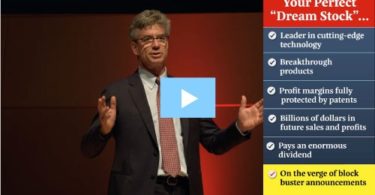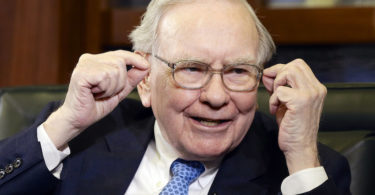Company Overview and Recent Strategic Moves
SITE Centers Corp. (NYSE: SITC) is a retail-focused REIT owning open-air shopping centers in affluent U.S. suburbs. In late 2024, the company radically refocused its portfolio by spinning off 61 “convenience” properties into a new REIT, Curbline Properties (NYSE: CURB) ([1]) ([1]). This separation left SITC with larger, grocery-anchored, and power-center assets in top retail submarkets (average household incomes ~$109k) ([1]). Management effectively “doubled down” on SITC’s core open-air retail strategy, shedding smaller strip centers to concentrate on dominant centers with strong anchors (69% of SITC’s remaining centers are grocer or warehouse club-anchored) ([1]). President & CEO David Lukes emphasized that post-spin, SITC’s curated mix of grocery, lifestyle, and power centers has “compelling near-term NOI growth” potential ([1]) ([1]).
Insiders signaled confidence through these strategic moves and significant capital returns. Insider ownership currently stands around 10% of shares ([2]), indicating management and board have meaningful skin in the game. Notably, after executing the spin-off and a series of asset sales, SITC paid out an enormous special dividend of $4.75 per share in mid-2025 ([3]) – a bold return of capital that insiders (as major shareholders) supported. This one-time payout, along with prior special distributions (e.g. a $0.16 special in early 2024) ([4]) ([4]), demonstrates insiders’ commitment to “unlocking” asset value for shareholders. However, it also leaves the remaining company smaller in scale. Below, we examine SITC’s dividend policy, financial metrics, valuation, and the risks that come with this refocused retail play.
Dividend Policy, AFFO/FFO Trend & Yield
SITC has maintained a stable regular dividend of $0.13 per quarter for the past few years ([5]). This payout was sustained through the spin-off, making Q3 2024 the tenth consecutive quarter at $0.13 ([5]). For full-year 2023, Operating funds from operations (FFO) was $1.18 per share ([4]) ([4]), and the regular dividend ($0.52 annually) represented a conservative ~44% payout of FFO. However, after shedding assets in the spin, SITC’s earnings base has shrunk dramatically. In Q1 2025, Operating FFO plunged to $0.16 per share (about $8.3 million total) from $1.14 a year prior ([6]), and Q2 2025 similarly came in at $0.16 per share ([3]). These figures reflect the much smaller post-spin portfolio and lower recurring cash flows, even though they beat analysts’ low expectations ([3]).
The regular dividend now consumes a much larger share of cash flow. For Q1 2025, the $0.13 dividend was over 80% of FFO – a sharp rise in payout ratio that raises questions about sustainability. On the other hand, shareholders were richly rewarded with the special $4.75/share dividend in 2025 funded by asset sale gains ([3]). Including that windfall, SITC’s trailing 12-month yield has been extraordinary. Even excluding specials, the stock’s forward yield has jumped to roughly 6–7% at the recent ~$8–9 share price (up from ~3.7% when shares traded in the mid-teens) ([5]). This high yield partly reflects the stock’s price correction after paying out the $4.75 special (the share price adjusted downward by a similar amount) and investors’ caution about the reduced earnings profile. Management has not cut the regular dividend yet, but coverage is tight – any further FFO decline or cash needs could pressure the $0.13 quarterly payout. Investors should watch whether insiders maintain this dividend or adjust it to a sustainable level given the new cash flow baseline.
Leverage, Debt Maturities and Coverage
Refocusing the portfolio also meant overhauling SITC’s balance sheet. Pre-spin, the company carried significant unsecured bond debt, but management’s plan was to use asset sale proceeds and new secured financing to “retire all unsecured debt” by the spin-off ([1]) ([7]). In 1H 2024, SITC built up liquidity – cash swelled to $1.18 billion by June 30, 2024 from $552M at year-end ([7]) ([7]) – and made initial debt cuts (repurchasing $88M of notes) ([7]) ([7]). By June, total consolidated debt was trimmed to about $1.5 billion ([7]). The company then secured a $1.1 billion mortgage loan facility to refinance the remaining bonds ([1]) ([7]). In fact, as of mid-2024, $555 million of that facility was expected to be drawn (with some collateral released as asset sales progressed) ([7]) ([7]).
Post spin-off, SITC’s capital structure has shifted heavily toward secured term loans with longer maturities. Based on year-end filings, the bulk of debt now consists of two term loan facilities maturing in 2028–2029 and 2031 – roughly $1.83 billion due 2029 and $0.87 billion thereafter ([8]). Only minimal amounts (~$30–38M annually) come due from 2025 through 2028 ([8]). This means no major refinancing needs for four years, an important buffer in today’s high-interest environment. The trade-off is reduced financial flexibility: shifting from unsecured bonds to asset-backed debt encumbers properties and could limit future borrowing capacity ([7]) ([7]). Management effectively mortgaged a large portion of the portfolio to lock in financing and eliminate near-term maturity risk, a prudent move given surging interest rates.
Interest coverage and leverage metrics remain a concern. The average effective interest rates on SITC’s term loans range roughly 6–9% after hedging ([8]) ([8]), which is substantially higher than the old debt. While SITC has utilized interest rate swaps to fix ~$950M of its variable-rate debt ([8]) ([8]), a sizable portion remains exposed to floating rates. With ~$2.8 billion in total debt and much lower EBITDA post-spin, coverage ratios are thin – indeed, Operating FFO in Q2 2025 was only $8.3M ([3]), indicating that after paying interest and expenses, little cushion remains for equity holders. It appears FFO barely covers interest plus the dividend at present. On a positive note, SITC’s asset sales and financing moves left it with no preferred stock obligations (the $175M Class A preferred was eliminated) and greatly reduced near-term interest expense ([6]) ([6]). However, the high leverage (debt far exceeds the company’s current market cap) amplifies risk. Any uptick in vacancy or unforeseen expense could put pressure on debt covenants or necessitate asset sales beyond those already planned. Insiders’ willingness to return cash (via the big dividend) rather than deleverage further suggests they believe the remaining debt load is manageable – but it also implies confidence that stable property cash flows can support heavy interest costs. This will be a key area to monitor in coming quarters.
Valuation and Peer Comparison
SITC’s stock has been reset by the spin-off and payouts, making straightforward valuation tricky. The shares trade around $8–9 as of Q3 2025, roughly half their level a year ago (adjusting for the special dividend). Based on the new run-rate FFO of ~$0.64 per share annually (Q1–Q2 2025 at $0.16 each), the stock trades at about 13–14× forward FFO. This multiple is in the ballpark of peers in the open-air shopping center space, though slightly higher than some larger peers. For example, Brixmor and Kimco (owners of similar grocery-anchored centers) have recently traded near 10–12× forward FFO, while higher-quality names like Regency Centers are around 14–15×. Given SITC’s elevated leverage and smaller scale, one might expect it to trade at a discount – the fact that it doesn’t could mean investors anticipate FFO growth or further value-unlocking moves. It’s worth noting that on a price-to-NAV basis, SITC may appear cheap: management sold a number of assets at strong prices (over $1.7 billion of assets were either sold or under contract around the spin ([1])), suggesting private-market values that could exceed the stock’s implied cap rate. Insiders and concentrated shareholders likely see hidden value in SITC’s high-quality suburban centers, which could explain their strategic doubling-down rather than an outright sale of the whole company.
From a dividend yield perspective, ~6% is markedly above the sector average (most retail REITs yield 4–5%). However, including the special payouts, total yield to shareholders has been extraordinarily high in 2024–2025. Such outsized returns may not recur, so investors should focus on the underlying FFO yield (~7–8% of price) and whether it can grow. Management has highlighted a lease pipeline and contractual rent bumps that should drive some NOI uplift. For instance, SITC had $14.4M in signed-but-not-opened rent in late 2023 (about 4.5% of annual base rent) to fuel near-term growth ([1]). Robust leasing spreads on new and renewal leases (34% and 9% respectively in 2024) indicate solid tenant demand in its centers ([7]) ([7]). If SITC can backfill vacancies and push rents, FFO could stabilize or improve, making today’s valuation look more attractive. That said, much of the bull case hinges on execution in leasing and prudent asset management, given the slim margin for error with so much debt on the balance sheet.
Risks, Red Flags, and Open Questions
Despite insiders’ evident confidence, SITC carries significant risks that investors should weigh:
- Exposed to market crashes
- Interest-rate and inflation risk
- Possible penalties on early distributions
- Backed by physical, tangible gold
- Transfer tax-free & penalty-free
- Privatize and control your retirement
– High Leverage and Tight Coverage: The company’s debt-to-EBITDA is elevated, and interest coverage is very tight. With an estimated ~$2.8B debt and ~6% average interest rate, annual interest expense could approach $170M. By contrast, 2025 cash NOI after expenses may only modestly exceed that. This leaves little room for error. A slight decline in occupancy or an increase in interest rates on the unhedged portion of debt could push free cash flow toward zero. The heavy debt load, now largely secured by properties, also limits financial flexibility – SITC can no longer easily tap unsecured debt markets for capital if needed ([7]) ([7]). Insiders have essentially bet that the current debt structure is tenable and that asset sales plus internal cash flow will cover obligations until the 2029 refinancing wall.
– Declining Occupancy and Tenant Risks: Pro forma occupancy dipped after the spin. Leased rate was 89.8% at Q1 2025, down from 91.7% a year earlier (pro-forma) ([9]). While some occupancy loss is due to property sales, it also hints at vacancies in the remaining portfolio. If any major tenants (especially anchors) downsize or close, backfilling large spaces could be challenging and costly. SITC’s top tenants weren’t explicitly disclosed post-spin, but likely include big-box and grocery anchors. Broader retail headwinds – bankruptcies (e.g. Bed Bath & Beyond, which affected many centers industry-wide in 2023) or reduced store footprints – remain a structural risk for open-air centers. On the flip side, SITC’s focus on necessity-based retail (grocery, off-price, etc.) in affluent areas should help resilience. This risk underscores the importance of SITC’s leasing success: recent leasing spreads are encouraging ([7]), but maintaining occupancy around 90% is critical for sustaining cash flow.
– Uncertain Growth Plans for RemainCo: A key question is what’s next for SITC now that it has slimmed down. The spin-off of Curbline was pitched as unlocking a high-growth vehicle, while SITC would continue “maximizing value…via leasing, tactical redevelopment, and opportunistic asset sales” ([1]). This sounds more like a value-harvest or steady-state strategy rather than aggressive growth. Indeed, insiders promptly returned a huge chunk of capital ($4.75/share) to shareholders ([3]), which could imply that management sees limited reinvestment opportunities that would outrun the cost of capital. One red flag is that core FFO is now greatly diminished, yet G&A and other fixed costs may not scale down proportionately. Can the company achieve efficiency as a smaller entity? Will it pursue acquisitions (possibly using its remaining $500+M unused debt facility or cash) to rebuild scale? Or, conversely, is SITC effectively in run-off mode, selling assets and paying dividends until an eventual liquidation or merger? These open questions make it harder to project long-term earnings trajectory. Investors should watch for management commentary on growth initiatives for the remaining portfolio.
– Insider Trading Signals: The report title asks why insiders “doubled down,” implying insider buying. It’s important to clarify that recent insider trading activity has been mixed. In late 2024, as SITC stock hit 52-week lows, several insiders sold shares – including a director and the CEO who sold over 160,000 shares in December 2024 ([10]) ([10]). Those sales at ~$15 were attributed to personal diversifications, but they did send a negative signal as the stock was sliding. Since then, there have been no large open-market insider purchases reported through mid-2025. The “doubling down” by insiders seems to refer more to their strategic actions (spinning off one business and concentrating their bets on the remaining retail portfolio) and the large equity stake many retained. Insiders still hold meaningful equity – for example, long-time significant shareholder Alexander Otto and affiliates owned nearly 28% of SITC pre-spin ([11]), though he trimmed his stake around the spin-off. As of 2025, insiders (executives and directors) collectively own about 10% of the company ([2]). This alignment suggests they are motivated to drive a successful outcome for SITC, but the lack of recent buying means investors must rely on management’s execution rather than an explicit bullish buy signal.
Given these considerations, key open questions going forward include: (1) Will SITC’s remaining portfolio produce enough growth to improve dividend coverage? Thus far, same-property NOI growth is positive but modest (~0.9% in first half 2024) ([7]). If growth disappoints, a dividend cut might be on the table. (2) How will the company deploy its resources – resume growth or continue returning capital? The post-spin cash was largely paid out to shareholders, and further “opportunistic” asset sales could mean more specials or buybacks. On the other hand, management might hold cash to weather uncertainty or even look for acquisitions if distress hits competitors. (3) Is SITC a takeover or merger candidate? With a smaller equity market cap ( ~$500–600M post-special) and high-quality assets, SITC could attract interest from larger retail REITs or private investors. Its secured debt structure is a complication, but a well-capitalized acquirer might find it efficient to absorb SITC’s portfolio at a discount. Insiders have not indicated an intention to sell the company, but investors will speculate if the current public-market valuation remains depressed.
Conclusion
SITC represents a contrarian retail REIT story where insiders have effectively doubled down on a handpicked set of shopping centers and returned excess capital to shareholders. The company boasts strong real estate in wealthy markets and has shown a willingness to unlock value via spin-offs and special dividends. Those moves, backed by insider ownership, are bullish signals about underlying asset value. However, the risks around leverage and a shrunken earnings base are significant red flags. In the coming quarters, investors will want to see stabilizing occupancy, successful refinancing of any remaining debt pieces, and prudent capital management – essentially, proof that management’s high-conviction bet pays off. With a high yield and low valuation relative to asset value, SITC offers potential reward but with high volatility and risk. In sum, insiders have placed their bets and doubled down; now the onus is on execution in a challenging retail real estate environment. Cautious investors may prefer to wait for clearer signs of FFO recovery or debt reduction, while more speculative investors might find the hefty dividend and insider alignment appealing as they watch this retail play unfold.
Sources: Key financial data and insider transactions were sourced from company press releases and filings (Business Wire/Nasdaq) ([6]) ([10]), as well as industry analyses ([3]) ([7]). Portfolio strategy and spin-off details were drawn from official announcements ([1]) ([1]). All citations are provided inline for reference.
Sources
- https://nasdaq.com/press-release/site-centers-announces-spin-off-of-convenience-portfolio-2023-10-30
- https://marketbeat.com/stocks/NYSE/SITC/insider-trades/
- https://nasdaq.com/articles/site-centers-sitc-q2-revenue-drops-64
- https://nasdaq.com/press-release/site-centers-reports-fourth-quarter-and-full-year-2023-results-and-declares-first
- https://seekingalpha.com/news/4103033-site-centers-corp-declares-0_13-dividend
- https://nasdaq.com/press-release/site-centers-reports-first-quarter-2025-results-2025-05-07
- https://panabee.com/news/site-centers-q2-earnings-2024
- https://d18rn0p25nwr6d.cloudfront.net/CIK-0001530804/c635e12e-6104-4b86-82fd-86cf034773f0.html
- https://gurufocus.com/news/2839889/site-centers-reports-first-quarter-2025-results
- https://marketbeat.com/instant-alerts/site-centers-nysesitc-sets-new-52-week-low-after-insider-selling-2024-12-18/
- https://fintel.io/sn/us/sitc
For informational purposes only; not investment advice.





